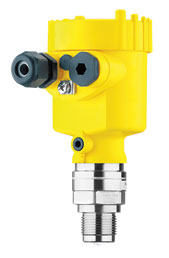Radar sensor for level measurement of liquids
Last May in Bologna, at the Fico Eataly World, Fabbrica Italiana Contadina, VEGA Italia organized one of the stages of its We Love Radar Tour. The idea of the event, supported by the CEO of VEGA Italia, Luciano Tonelli, was to show the portfolio of VEGA products, with particular attention to VEGAPULS64 and VEGAPULS69. In particular, the VEGAPULS 64 is a sensor for continuous level measurement of liquids, and operates with a transmission frequency of 80 GHz. This corresponds to a factor of 3 compared to the technologies used until now: for that reason, the antenna system and the process fitting can have correspondingly smaller dimensions. This enables the radar beam to be targeted at the liquid surface with pinpoint accuracy, avoiding internal obstructions like heating coils and agitators. The antenna system of VEGAPULS 64 is encapsulated in PTFE or PEEK, so there are no cavities or crevices in which product can accumulate. The surface of the material is very finely processed with diamond tools, which also considerably reduces product adhesion. Thanks to the high dynamic range of the sensor, signal attenuation caused by product deposits is largely compensated. This allows the level to be reliably detected even with contamination on the sensor. Therefore, the measuring results are exact regardless of the process conditions, and thanks to its maintenance-free operation, with the non-contact measurement method, the plant is highly available.
Sometimes, however, exact measurement is extremely difficult. For example, when the measured media have a low dielectric constant (DK). Until recently, the ‘rule’ was that a microwave or radar measurement in an obstacle-free tank only functioned reliably when the medium had a dielectric constant of at least 2. 80-GHz radar sensors can reliably detect and measure liquids and bulk solids that have a significantly lower dielectric constant. In addition, wireless data transmission now enables convenient operation with smart phones and tablets, making it easier to configure devices that are difficult to reach or located in harsh environments. Since access to the sensors is wireless, Bluetooth makes the complex hazardous area authorization procedures/permits that are normally required, a thing of the past.

